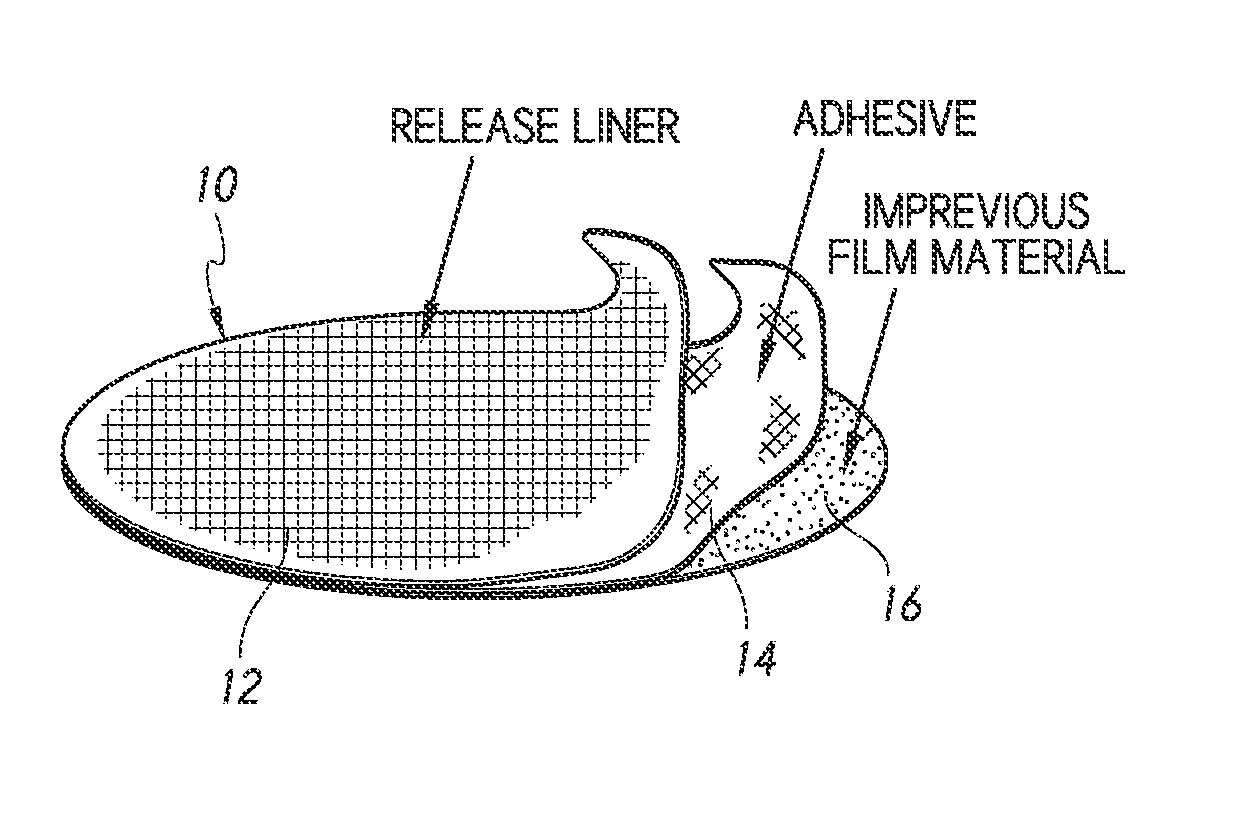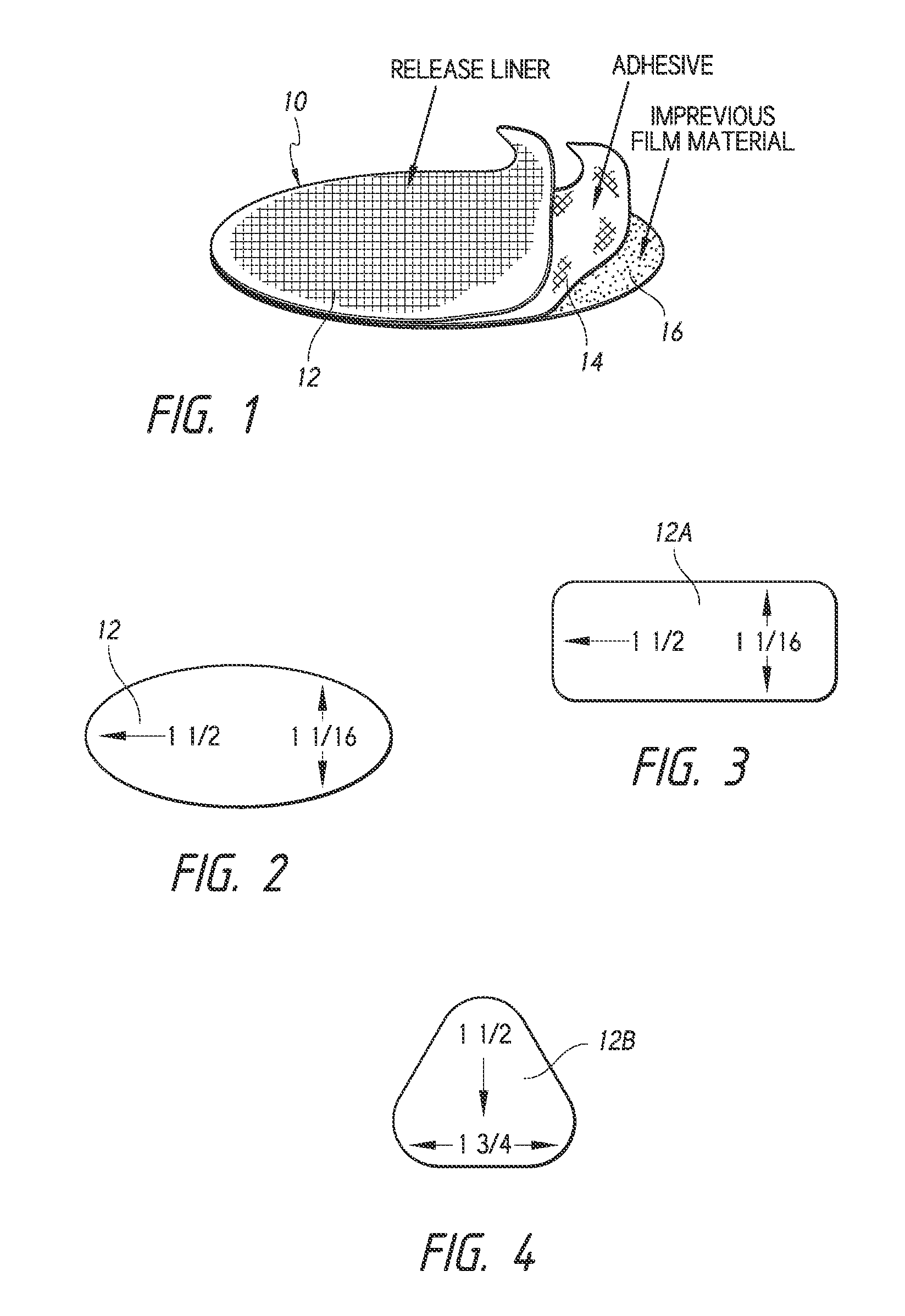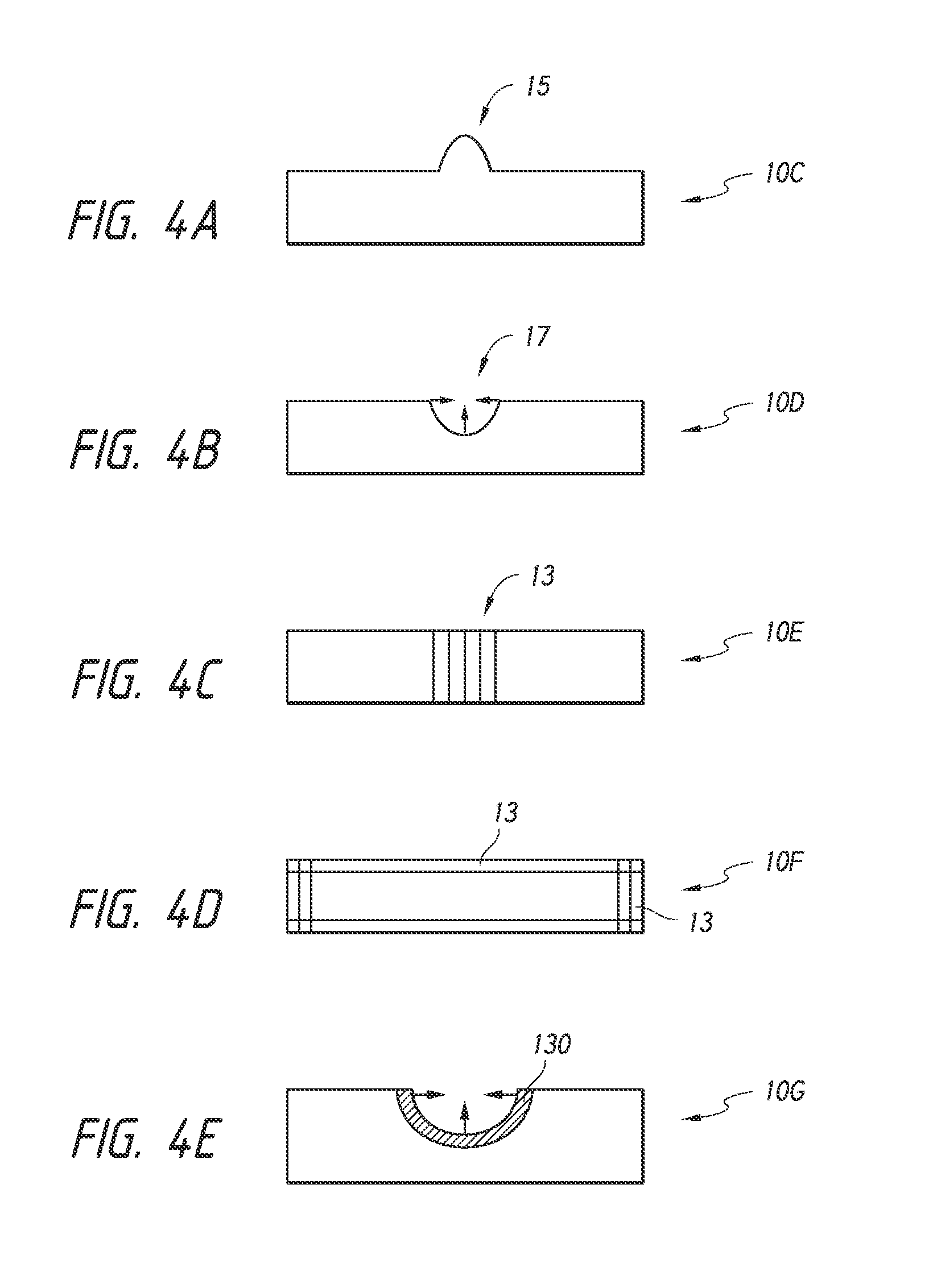Systems and methods for treating female incontinence and pelvic nerve dysfunction
a technology of pelvic nerve and systemic incontinence, which is applied in the field of systems and methods for treating pelvic conditions, can solve the problems of limited success of prescription drugs in treating overactive bladders and significant side effects, and achieve the effects of convenient carrying, convenient carrying, and convenient carrying
- Summary
- Abstract
- Description
- Claims
- Application Information
AI Technical Summary
Benefits of technology
Problems solved by technology
Method used
Image
Examples
example 1
[0109]A patient suffering from female urinary incontinence can be given a dispenser of FIG. 6 with instructions to tear a section containing a patch along the line of weakness (e.g., perforation line) and apply it over the clitoral hood to treat or prevent urinary incontinence. For as long as the incontinence continues, a new patch should be applied each day and after each shower or bath. The patch will serve to stimulate the visceral pelvic or somatic nerves or their pathways pelvic to treat nerve dysfunction. No adverse side effects would be suffered.
example 2
[0110]The procedure of Example 1 can be followed to provide relief from any of the following conditions: urinary frequency or urgency, overactive bladder, urinary retention, fecal incontinence, constipation, interstitial cystitis, or vulvodynia to stimulate the visceral pelvic or somatic nerves or their pathways pelvic to treat nerve dysfunction. No adverse side effects would be suffered.
example 3
[0111]A patient suffering from female urinary frequency or urgency, overactive bladder, urinary incontinence or retention, fecal incontinence, constipation, interstitial cystitis, or vulvodynia can be given a patch such as shown in FIGS. 6-8 with instructions to apply it over the clitoral glans, shaft, and / or hood. For as long as the incontinence continues, a new device may be applied each day and after each shower or bath. In some embodiments, the device is waterproof and will remain adhered after bathing. The device, in some embodiments, will serve to stimulate the visceral pelvic or somatic nerves or their pathways to treat nerve dysfunction. No adverse side effects would be suffered.
PUM
 Login to View More
Login to View More Abstract
Description
Claims
Application Information
 Login to View More
Login to View More - R&D
- Intellectual Property
- Life Sciences
- Materials
- Tech Scout
- Unparalleled Data Quality
- Higher Quality Content
- 60% Fewer Hallucinations
Browse by: Latest US Patents, China's latest patents, Technical Efficacy Thesaurus, Application Domain, Technology Topic, Popular Technical Reports.
© 2025 PatSnap. All rights reserved.Legal|Privacy policy|Modern Slavery Act Transparency Statement|Sitemap|About US| Contact US: help@patsnap.com



